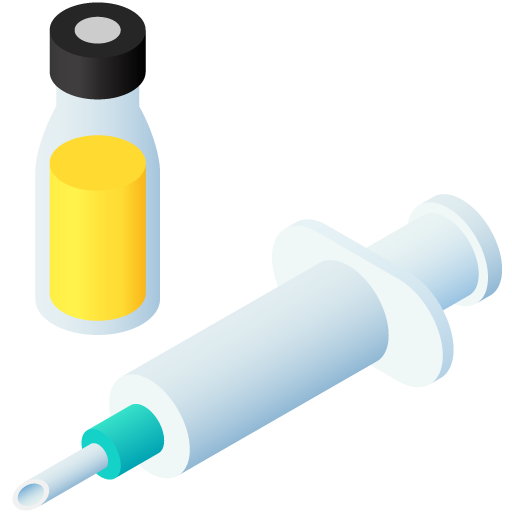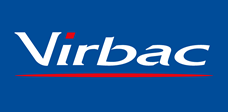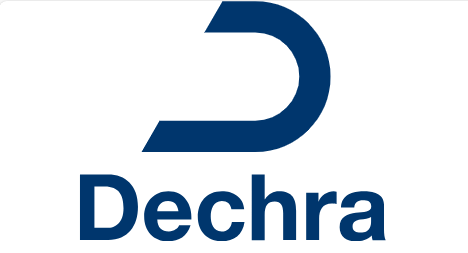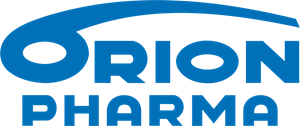Combination therapy
No results were found for your selected species
Osphos
Active substance
ATC code
Species
Horses.
Indications
For the alleviation of clinical forelimb lameness associated with the bone resorptive processes of the distal sesamoid (navicular bone) in adult horses.
Dose to be administered and administration route
Intramuscular use.
1.53 mg clodronic acid per kg bodyweight, corresponding to 3 ml of the veterinary medicinal product per 100 kg body weight. Divide the total volume evenly for administration at 2 to 3 separate injection sites.
The maximum dose is 765 mg clodronic acid per horse (one 15 ml vial per horse >500 kg). Do not exceed the recommended dose.
To ensure a correct dosage, body weight should be determined as accurately as possible.
Adverse reactions
Horses:
|
Common (1 to 10 animals / 100 animals treated): |
Nervous Lip licking, Colic Increased yawning |
|
Uncommon (1 to 10 animals / 1,000 animals treated): |
Head bobbing Injection site swellinga, Injection site paina Pawing Hives Pruritus |
|
Rare (1 to 10 animals / 10,000 animals treated): |
Renal insufficiencyb |
a Transient.
b More frequently observed in animals concurrently exposed to NSAIDs. In these cases, appropriate fluid therapy should be instituted and renal parameters monitored.
Reporting adverse events is important. It allows continuous safety monitoring of a veterinary medicinal product. Reports should be sent, preferably via a veterinarian, to either the marketing authorisation holder or its local representative or the national competent authority via the national reporting system. See the package leaflet for respective contact details.
Dispensing
POM-V - Prescription Only Medicine – VeterinarianSUMMARY OF PRODUCT CHARACTERISTICS
1. NAME OF THE VETERINARY MEDICINAL PRODUCT
Osphos 51 mg/ml Solution for Injection for Horses
2. QUALITATIVE AND QUANTITATIVE COMPOSITION
1 ml contains:
Active substance:
Clodronic acid 51.00 mg
(Equivalent to clodronate disodium tetrahydrate 74.98 mg)
For the full list of excipients, see section 6.1.
3. PHARMACEUTICAL FORM
Solution for injection.
Clear, colourless solution, practically free from visible particles.
4. CLINICAL PARTICULARS
4.1 Target species
Horses.
4.2 Indications for use, specifying the target species
For the alleviation of clinical forelimb lameness associated with the bone resorptive processes of the distal sesamoid (navicular bone) in adult horses.
4.3 Contraindications
Do not administer intravenously.
Do not use in horses less than 4 years of age, due to the absence of data regarding use in growing animals.
Do not use in horses with impaired renal function.
Do not use in cases of known hypersensitivity to the active substance or to any of the excipients.
4.4 Special warnings for each target species
The veterinary medicinal product should be used only after a proper diagnosis combining a complete orthopaedic clinical examination including local analgesia and appropriate imaging techniques, in order to identify the cause of pain and the nature of bone lesions.
Clinical improvement in lameness grade may not be accompanied by radiographic changes in the appearance of the navicular bone.
4.5 Special precautions for use
Special precautions for use in animals:
Use caution when administering bisphosphonates to horses with conditions affecting mineral or electrolyte homeostasis, e.g. hyperkalaemic periodic paralysis, hypocalcaemia.
Adequate access to drinking water should be provided when using the product. If uncertainty exists about renal function, renal parameters should be assessed before administration of the product. Water consumption and urine output should be monitored after administration.
Special precautions to be taken by the person administering the veterinary medicinal product to animals:
Accidental self-injection of this product may increase the risk of obstructed labour in pregnant women and affect fertility in men.
Care should be taken when handling the product to avoid self-injection.
In case of accidental self-injection, seek medical advice immediately and show the package leaflet or the label to the physician.
4.6 Adverse reactions (frequency and seriousness)
In a clinical field study, administration of clodronic acid at 1.19 mg/kg to 142 horses resulted in the following frequency of adverse reactions: nervousness, lip licking, yawning and colic were common; head bobbing, transient swelling and/or pain at the injection site, pawing the ground, hives and pruritus were uncommon.
Episodes of renal insufficiency have been reported, rarely, during the postauthorisation period, and were more frequently observed in animals concurrently exposed to NSAIDs. In these cases, appropriate fluid therapy should be instituted and renal parameters monitored.
The frequency of adverse reactions is defined using the following convention:
- very common (more than 1 in 10 animals treated displaying adverse reaction(s)) - common (more than 1 but less than 10 animals in 100 animals displaying adverse reactions during the course of one treatment)
- uncommon (more than 1 but less than 10 animals in 1,000 animals treated)
- rare (more than 1 but less than 10 animals in 10,000 animals treated)
- very rare (less than 1 animal in 10,000 animals treated, including isolated reports).
4.7 Use during pregnancy and lactation
Laboratory studies in rats and rabbits have shown evidence of maternotoxic effects, especially during late gestation stages. Laboratory studies in rats and rabbits have not produced any evidence of teratogenic or foetotoxic effects.
The safety of the veterinary medicinal product has not been studied in pregnant or lactating mares. The use of the product during pregnancy or lactation in mares is not recommended.
4.8 Interaction with other medicinal products and other forms of interaction
Medications such as aminoglycosides whose toxicity can be exacerbated by a reduction in serum calcium, and medications such as tetracyclines that can reduce serum calcium should not be given for 72 hours after administration of clodronic acid.
Concurrent administration of potentially nephrotoxic drugs, such as NSAIDs, should be approached with caution and renal function should be monitored.
4.9 Amounts to be administered and administration route
Intramuscular injection only. 1.53 mg clodronic acid per kg bodyweight, corresponding to 3 ml of the product per 100 kg body weight. Divide the total volume evenly for administration at 2 to 3 separate injection sites.
The maximum dose is 765 mg clodronic acid per horse (one 15 ml vial per horse >500 kg). Do not exceed the recommended dose.
4.10 Overdose (symptoms, emergency procedures, antidotes), if necessary
Adverse reactions may occur when the dose is exceeded. At 2X, 3X and 5X the dose, flehming, head shaking, neck retching, pawing, agitation, depression, muscle fasciculation and colic may be observed. A dose related trend for increases in blood urea nitrogen (BUN) and creatinine may also occur. At 5X dosing of clodronic acid, 3 out of 6 horses developed temporary gait abnormalities including hypermetria, spasticity or mild ataxia. Erosions of the glandular mucosa have been observed in 2 out of 8 animals administered 3X the recommended treatment dose. This was not observed in the 1X or 2X groups.
In one of 8 horses administered 3X the recommended treatment dose a 3 cm diameter area of muscle atrophy was observed at one of the injection sites. In a clinical safety study conducted in 48 animals, signs of colic were observed in 94% of animals administered 3X the recommended treatment dose. In most cases, repeated hand walking was adequate to alleviate symptoms. Monthly administration of a 1X dose for a total of six months did not lead to signs of overdose.
4.11 Withdrawal period
Meat and offal: Zero days.
Not authorised for use in animals producing milk for human consumption.
5. PHARMACOLOGICAL PROPERTIES
Pharmacotherapeutic group: Bisphosphonate, Clodronic acid. ATCvet code: QM05BA02
5.1 Pharmacodynamic properties
Clodronic acid is a geminal bisphosphonate that inhibits bone resorption by binding to hydroxyapatite crystals (inhibiting their formation and dissolution), and by direct cellular effects on osteoclasts (inhibiting osteoclast cell function). It has a high affinity for solid-phase calcium phosphate and therefore accumulates in bone, where it inhibits the formation, aggregation and dissolution of calcium phosphate crystals. Bound to bone matrix, clodronic acid enters resorbing osteoclasts, alters their morphology and reduces the number of active osteoclasts, regardless of the cause of osteoclast activity. Clodronic acid increases bone mass by inhibiting bone resorption and retarding bone turnover.
5.2 Pharmacokinetic particulars
The pharmacokinetic profile after a single intramuscular administration of 765 mg clodronic acid in horses diagnosed with navicular syndrome is characterised by rapid absorption of clodronic acid and a longer terminal elimination phase. The plasma half-life is approximately 11.8 ± 12.5 hours (mean ± standard deviation), Cmax is
7.5 ± 1.7 µg/mL and time to maximum concentration (Tmax) is approximately 0.6 hours.
6. PHARMACEUTICAL PARTICULARS
6.1 List of excipients
Sodium hydroxide (for pH adjustment)
Water for injections
6.2 Major Incompatibilities
In the absence of compatibility studies, this veterinary medicinal product must not be mixed with other veterinary medicinal products.
6.3 Shelf life
Shelf life of the veterinary medicinal product as packaged for sale: 3 years. For single use only; any remaining product should be discarded.
6.4 Special precautions for storage
Keep the container in the outer carton. Do not store above 30°C.
6.5 Nature and composition of immediate packaging
Clear glass (type I) vial with siliconized rubber stopper, an aluminium seal and a plastic flip-off cap containing 15 ml of clodronic acid solution. Each cardboard box contains 1 vial.
6.6 Special precautions for the disposal of unused veterinary medicinal product or waste materials derived from the use of such products
Any unused veterinary medicinal product or waste materials derived from such veterinary medicinal product should be disposed of in accordance with local requirements.
7. MARKETING AUTHORISATION HOLDER
Dechra Limited
Snaygill Industrial Estate
Keighley Road
Skipton
North Yorkshire
BD23 2RW
United Kingdom
8. MARKETING AUTHORISATION NUMBER
Vm 10434/4086
9. DATE OF FIRST AUTHORISATION
02 September 2015
10. DATE OF REVISION OF THE TEXT
February 2021
Approved 11 February 2021


| Art. Nr. | 10434/4086 |
|---|---|
| EAN | 5701170422382 |
 TRUSTED SOURCE
TRUSTED SOURCE








